The Talgo Trials
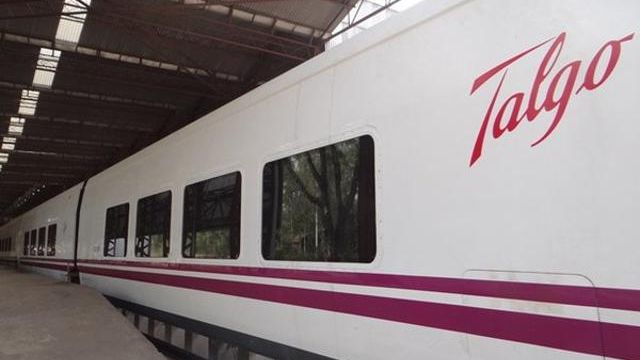
Three score and nine years ago, our forefathers brought forth upon this continent, a new system of railways, conceived in socialism, and dedicated to the proposition that all trains are created equal. Since then, all trains had indeed been equal: so equal that we decided the system should live on forever. Ever since the Swiss Car and Elevator Manufacturing Company of Switzerland designed our train coaches in 1956, they have remained mostly the same. The Integral Coach Factory in Perambur, Chennai, has been exercising its monopoly and continuing to churn out these coaches with little or no change since then, like a photocopier. The greatest improvement these “ICF” coaches have seen in these 60 years was CFLs and LEDs replacing light bulbs and the addition of mobile charging points. The LHB coaches were a big step forward in design and aesthetics, but they were in essence, only an upgraded version of the ICF coaches rather than altogether new technology if you discount their lightweight, high-speed FIAT bogies which were the only radical technology change Indian passenger railway coaches have ever seen.
In such a context, when Indian trains have been stuck in the stone age since forever, the buzz and excitement around the Talgo coaches currently on trial in India is understandable. Everyone seems to be going hyper chanting “Talgo, Talgo”, including the dumb media, who have been reinforcing the widely known fact that they know jack when it comes to railways, by calling them Bullet trains and such and by gushing at its “swanky” interiors, which are really only the standard cattle class of Europe. So, what are these modern age wonders?
Talgo is a Spanish conglomerate specializing in railway stuff: they build and maintain very high-speed trains, high-speed trains, Intercity trains, locomotives, coaches and equipment, and invent awesome train technology for railways across the world. They are known for their innovations like wheelsets and variable gauge coaches. Apart from Spain, Talgo trains are also in service in USA, Germany, Switzerland, Kazakhstan, Uzbekistan, etc. And now, they have set sights on India, whose railway manufacturing and service industry, currently 100% nationalized, is probably the world’s largest remaining untapped market. In 2014, Talgo proposed to bring a train of theirs for testing in India, which they claimed can be run in India without any alteration to running infrastructure (permanent way, rails, signaling etc) at speeds and comfort levels much higher than our 1960’s trains. All transport and testing would be done completely at Talgo’s cost. The Indian government shrugged and said, “go ahead!” This decision was historical because for the first time in the history of the country would railway coaches not made or intended to be made in India by the government run on Indian rails. It was also momentous because ordinary Indians could for the first time see in real and not through pictures on how “real” trains looked and felt like.
The Talgo trials were intended to demonstrate the ability of Talgo’s coaches to run on Indian tracks at much higher speeds than conventional Indian trains with no modifications to existing tracks.
Talgo’s products include the Talgo Avril, Talgo 350 and Talgo 250, bidirectional powercar-hauled trainsets for high speeds. The Avril and 350 are High-Speed “Bullet Trains” while the Talgo 250 is used for semi-high-speed Intercity services. Talgo also produces “Talgo Pendular” independent train coaches, any number of which can be hauled by a locomotive, which are also used in the Talgo 250 trainsets, and which also came to India for testing, probably some out of RENFE‘s out-of-service coaches. Indian locomotives were used for testing, mostly a WDP4 or a WAP5. They were tested both empty and fully loaded at maximum speeds of 180 kph because that is what conventional (non-Bullet-Train) tracks can support, as anything above 200 kph will require specially built tracks and signaling systems. The Talgo was not intended to be a High Speed “Bullet” train but to be used for intercity services at 150 to 180 kph. DO NOT believe the bullshit the media peddles saying Talgo trains will run at 250 kph in India. They are capable of doing that, but not here.
[ws_table id=”39″]
The Talgo coaches were shipped from Spain to India by sea and after arriving at Mumbai port they were transferred to Izzatnagar workshop in UP by road. There they were retrofitted to “suit Indian conditions” and tested on the Bareilly – Moradabad route as special trains. They were then run at speeds reaching up to 180 kph on the Mathura-Palwal route, on which the Gatimaan Express runs at 160 kph. The most extended tests took place in the entire Delhi – Mumbai stretch with an attempt to beat the timings of the Rajdhani Express, and which it did! The Talgo coach-WDP4 locomotive hybrid train became the fastest train on Indian tracks, ever. So, this seems to be good enough to induct Talgo trains into our network, right? Not really.
Before going into their pros and cons, let us see how the Talgo coaches were able to run on Indian railway tracks without any modification to the track or the coaches. Also, the question arises as anyway the tracks, signals and the congestion on them remain the same why we just can’t make our regular trains run as fast as Talgos instead of spending money on them? Fair question, since speeds of trains depend on the track more than the equipment being used. A track section certified for 120 can have trains running on them only at a maximum speed of 120 kph and not more. On the Delhi-Mumbai route, the “King” Rajdhani already runs at the top speed allocated for each track section, reaching 130-140 kph top speeds where the tracks allow it. So, if both our trains and the Talgos can run at the same speed, how can the Spaniard be faster overall and reduce up to four hours of travel time? Surely it does not run faster than the Rajdhani, that is, at speeds higher than what the tracks allow?
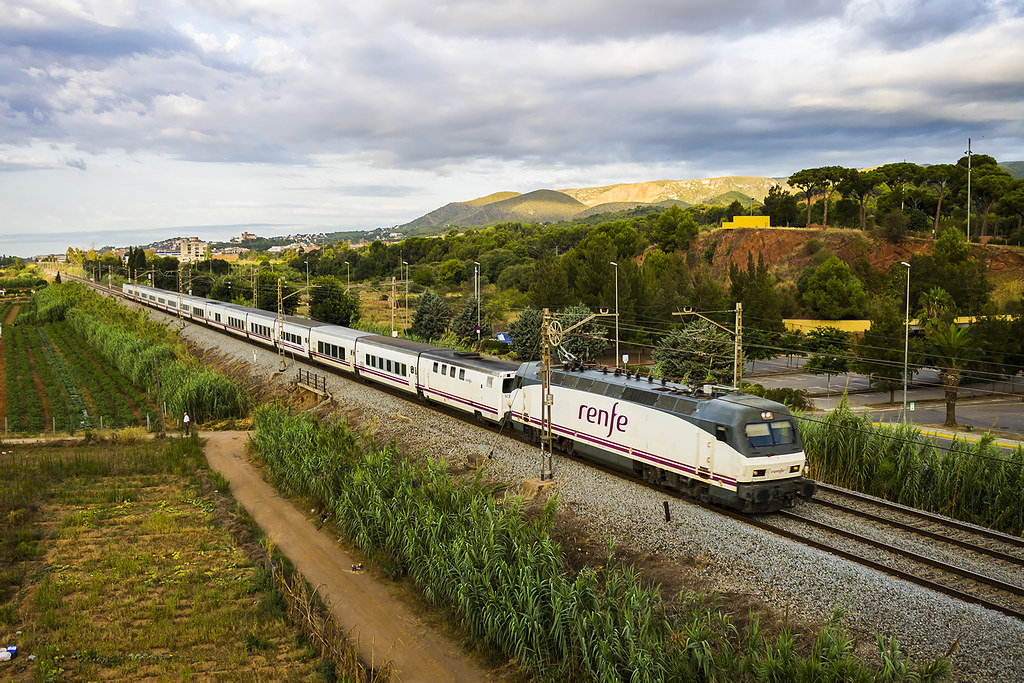
It does not. Though it might be allowed to run marginally faster than the Rajdhani, the Talgos’ top speeds will more or less equal to the Raj’s when it comes to regular services. We know that Indian trains have low average speeds and hence high travel times not just because of lack of top speed but because they are unable to maintain high top speeds over long periods of time as factors like track conditions, congestion and shortcoming of equipment keep slowing it down, just like 200 kph-capable cars on our roads are forced to run at high speeds only in bursts because of road conditions and congestion. Talgo coaches are able to overall run faster than the Rajdhani because they do have the handicaps that slow our trains down, which is their high weight and rigidness. Talgos’ light weight and low center of gravity enable them to accelerate and decelerate much faster and take turns without slowing down, both which our trains cannot. And all this is made possible by Talgo’s unique wheel model.
The “Independent” Talgo Wheel
The most radical feature of Talgo trains is their wheels which are unlike any other train anywhere in the world. To know more how the Talgo wheels let us first look at the other major types of wheel assemblies used in trains worldwide.
Please Note: The wheelset assembly is called a bogie. The railway vehicle in which you travel in is NOT a bogie, that is a coach or compartment or carriage or car.
Fixed Bogies: The model most railways and trains follow for their coaches is to have two ‘wheelsets’ of four wheels connected by two axles each, present towards either end of the coach. This is simple to build and maintain, easy to run and very stable. All Indian trains use this type. In our trains, the bogie is independent of the coach shell and not integral, Everything about the wheels of the coach ends with the bogie; all suspension, dampening etc has to take place within the bogie.

Shared Bogies: Also called Jakob’s bogies, these are majorly used in European trains. Just like our bogies, these have four wheels connected by two axles. But instead of fixed entirely under one coach, these bogies are shared between two coaches with each coach end sitting on one-half of a bogie, getting one axle and two wheels and two axles and four wheels in total. So, such trains have only one bogie per coach with four wheels in essence. Suspension systems for these bogies extend into the coaches, which enable smoother and more comfortable rides, while also lowering the center of gravity enabling high-speed turns and tilting.

Talgo Independent Wheels: Talgo train coaches are different from both of these in that do not even have bogies at all. They are like Jakob’s bogies that wheels are shared by coaches, but, in this case, there are just two wheels, one each side, sitting at the junction between coaches, shared by two coaches! These two wheels are “independent” that they are not even connected by an axle in the traditional sense. From eight wheels per coach for our trains, we have come to two wheels per coach for the Talgo.
Here are some cross-section views of a Talgo coach end, you can see how the coaches are connected.
See those pillar-like things? Those are vertical dampeners (suspension). While traditional railways believe in total separation of wheels and coach, Talgo coaches have integrated wheels into the coach itself with their suspension end buttressing the roof of the coach! And the wheels are independently rotating, leading to higher stability.
This independent wheel model of the Talgo enable all of its greatest advantages:
Weight: Our trains are terribly overweight. An LHB AC Chair Car weighs 39.5 tons or 16.8 tons for every ten meters, while ten meters of Talgo coach weigh just 9.3 tons at a weight per seat ratio of only 341 kg, making Talgo coaches 45% lighter than LHB coaches. As Talgo coaches do not have bogies, axles and only 1.5 wheels per coach as opposed to two bogies, four axles and eight wheels per LHB coach, a lot of weight and the need for lugging all that weight (one FIAT-SIG bogie used in LHB coaches weighs 6.6 tons, and two of them put together weigh as much as an entire Talgo coach!) as well as the rotational inertia of all those axles and wheels. In all, this means much, much faster acceleration and braking and everything.
Efficiency: Railway vehicles energy efficiency is measured by their weight-per-seat ratio. Our LHB coaches have a weight per seat ratio of 506 kg, while Talgo coaches have a weight per seat ratio of only 341 kg, meaning a Talgo coach uses much less energy to move the same load, which makes it much more energy efficient than our heavy coaches. Talgo trains, overall, have the least weight-per-seat ratios in the world.
Taking Curves: While most trains today achieve tilting to tackle curves without slowing down by mechanically “raising” one edge of the coach body using hydraulics controlled by a computer, Talgo’s trains just let nature do the job, and have no additional equipment installed for this. The absence of bogies and high suspension create extremely low centers of gravity and high rotational center, enabling Talgo coaches to achieve tilting ‘automatically’ by ‘naturally’ utilizing forces of inertia.
Are Talgo Trains Suitable for India?
The Talgo trials were not just a test of coach compatibility but also a phase in India’s search for modern trains that look better, feel better, run faster to replace its ancient fleet. The Talgo seems to fit the bill, but are they those trains India is looking for? Talgo coaches not just are able to run on Indian tracks, but can do so at good speeds. But the coaches cannot be inducted into Indian Railways based on speed trials alone, there are a number of other parameters to be considered before it can be decided if Talgo trains can run in India. Speed is good, looks are good, but all that will not matter if they can not do what they are supposed to do, like capacity, for instance.
The biggest advantage and disadvantage of Talgo coaches is their independent wheelset model. While this ensures high speeds on curves, greater passenger comfort, and the least energy consumption it also severely limits the length of coaches and hence their carrying capacity. If at all Talgos were to come to India, it would surely not be the Talgo 250 trainset that can have only a maximum of 11 coaches and 299 passengers. This sounds laughable in India where our trains regularly have 22 coaches and we seat 300 passengers in just three coaches (or sometimes in a single coach)! Obvious questions of financial viability aside, putting aside precious shared track space for such a small train will be a tremendous waste. So, since using the coaches as a trainset would not work, we could replace our existing coaches with Talgo coaches. Would that work? We have already seen that they are compatible with our locomotives and tracks. To see how they perform in capacity-wise, let us compare Indian Railways’ LHB coaches and Talgo Pendular coaches in the AC Chair Car configuration.
[ws_table id=”40″]
Comparison of Talgo and LHB coaches show that two Talgo coaches are only three meters longer, have an area of just one square meter more and can seat only six fewer people compared to a single LHB coach, meaning that Talgo coaches have almost the same capacity of our LHB coaches, unlike many European trains when it comes to seating configuration. So, Talgo coaches are of the same dimensions and capacity as our coaches and can run faster and are more comfortable than our trains. So why not just go for them?
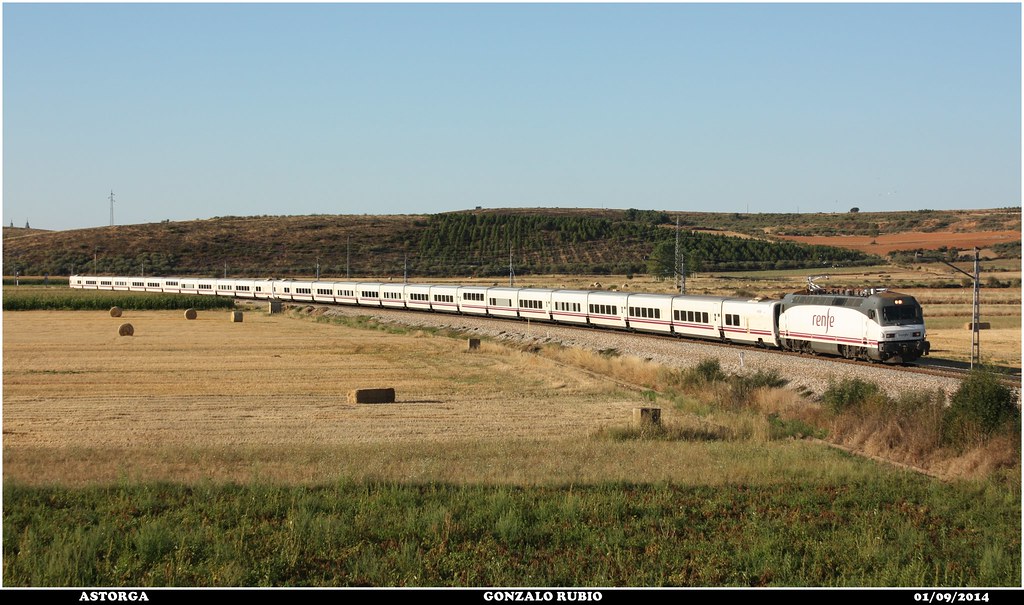
There is something everyone seems to be forgetting. All Talgo coaches provided are of seating format, the most used train coach format all over the world. However, this AC Chair Car format is a premium service in India and commands only a minuscule portion of the market, limited to just 50 Shatabdi Expresses and a couple of Durontos. Because of the size of India, its economics, demographics and low train speeds, Indian railways is one of the few operators in the world that run predominantly sleeper trains, with non-AC sleeper coaches making up a huge majority of IR’s express train coaches. The So, if any coach format has to be replaced, it is the non-AC Sleeper car. And, no manufacturer in the world makes those coaches, including Talgo, who does have Sleeper coaches are of European spec, spacious, luxurious and very low-capacity of only 20 couchettes (Europe-speak for sleeper berths) per coach. They could probably replace our AC 2 tier coaches. So, even if the Talgo coaches were to be adopted, they would be enough only to serve a very, very small percentage of the market.
And Talgo coaches are of course not compatible with our coaches, we there is no question of mixing them. Then there are other things working against Talgo such as the height of the coaches. Talgo trains sit very low because of their absence of bogies. The current problem of our platforms being too low for our trains will be reversed. Then there are questions of their toughness, suitability to our extreme and varying climates and even things like standing passengers and luggage carrying capacity. And Talgos are not EMUs, and the two power cars are a waste of space and capacity we could do without when moving to a new system. Talgo coaches cannot be easily attached and detached, they need workshops with complicated machinery to do that.

Indian Railways’ plan to replace our old coaches with swanky new trains had found life with its “Trainset Project“, aimed at purchasing 15 EMU trainsets to replace our existing coaches and locomotives for running Rajdhani and Shatabdi services. The Project is currently stuck because bidders believe 316 coaches is too less a quantity to be profitably produced and want the number to be increased to 1000. Talgo was one of the bidders, and the idea for these trials came from that tender. But, if they are aiming to sell 1000 or more Talgo coaches, they will be mistaken because the market for their product is definitely low in this country. They would have to produce a lot of non-AC coaches, sleeper and sitting, and also AC sleeper coaches confirming to our capacity standards. Talgo’s sleeper coaches should accommodate atleast 30 people instead of the 20 it does now. They will even have to come up with a new product altogether. This brings us back to where we started with the trainset project.
The best train model for India still remains high-capacity EMU trainsets with multiple axles powered, custom built for Indian conditions. While Talgo coaches can be serious contenders with their unique wheels and light weight, their scope is, unfortunately, way too limited. If at all Talgo coaches were to be adopted, Indian Railways will have to initiate either one of two massive policy shifts. Either we have to convert a lot of sleeper trains into seating ones, or we have make all our trains air-conditioned like they are everywhere in the world. How about that?






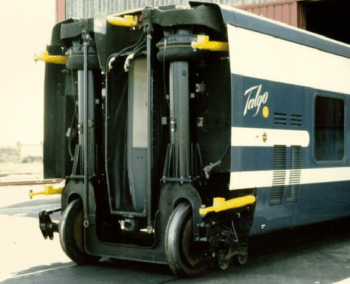
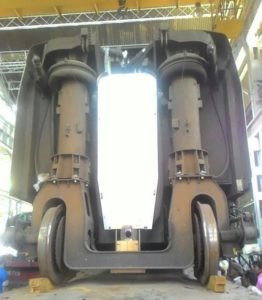
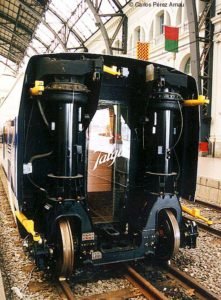
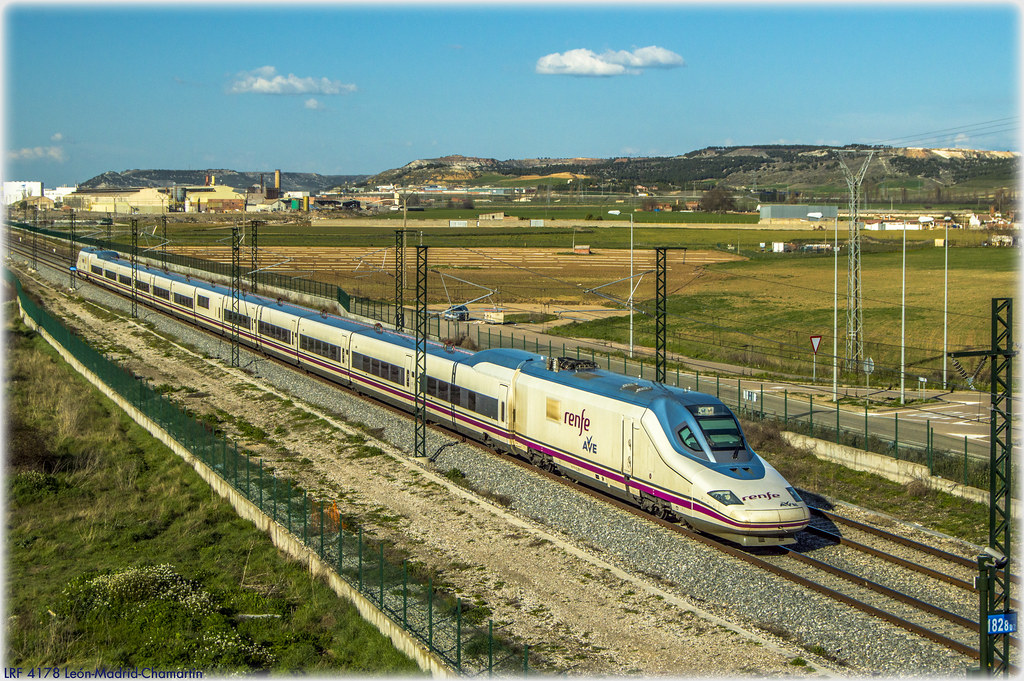

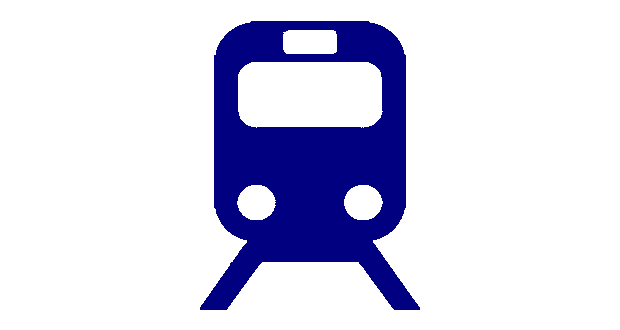
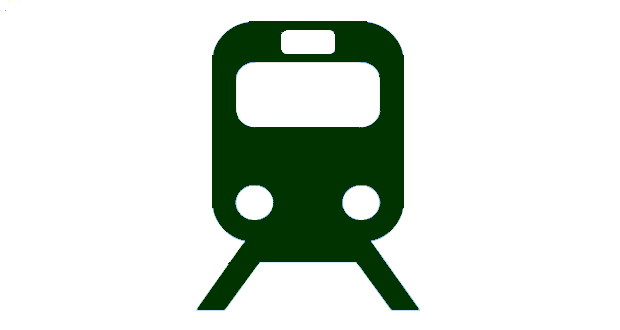
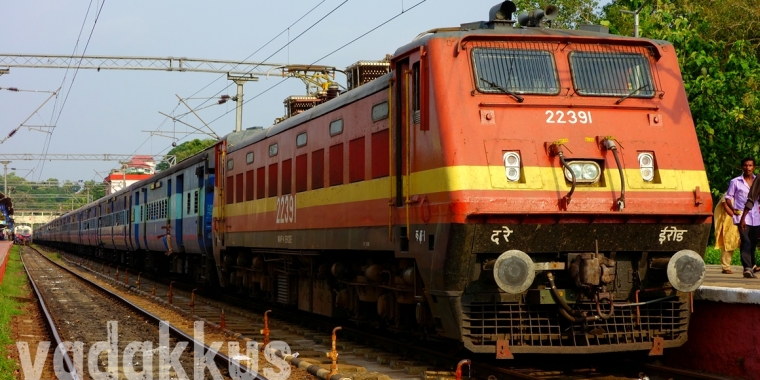
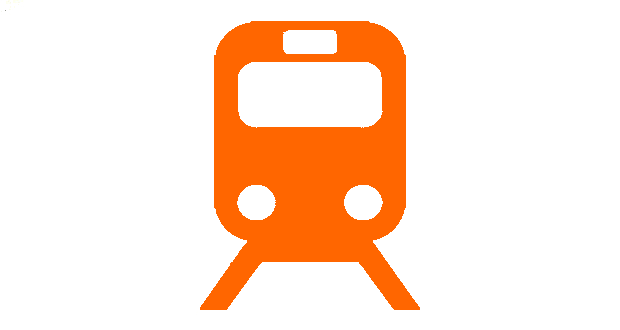
Typo here – Talgo coaches are able to overall run faster than the Rajdhani because they do have the handicaps that slow our trains down
Can you use your knowledge to suggest what should be the ideal solution to say replace Rajdhani , Shatabdi and Duranto trains? Name the train set or coach and locomotive and technology required to run each of these trains at 180 kmph . If we can atleast change these trains for now, and replace all ICF coaches with LHB – then also I consider it a big improvement.
Talgo coaches in Western Europe are 2.96 m long. Those in Russian Gauge markets are 3.2 m long. This can add an extra row of seats. The constant figure is the number of bays- in five bays, if they can fit in 6+2 berths for 3A and 4+2 for 2A, they can actually accommodate more per metre in a Rajdhani service. Talgo, in their current form, are not suitable for India, but they can design a product that actually is- and make it work. That’s how the industry works.
One way to make this project work is by giving them space for their own factory. We cannot trust ICF or even RCF with this. Let them design a better product. As for prices, for a fraction of the amount paid for the trainsets, they can get multiple times the number of coaches, which can make the factory financially viable- not just for India, but also for export markets, seeing export orders come for our LHB coaches.
At the price IR will pay for a paltry 316 coaches, they can get multiple times the number for various Rajdhani, Shatabdi, AC Duronto and AC Superfast trains, and this will be more cost-effective than buying plenty of long Regina/Pendolino/Desiro/S120 trains, and a product will be ready to run on Indian tracks a lot sooner. But IR will have to let Talgo do the operations, as long as they’re building in India.